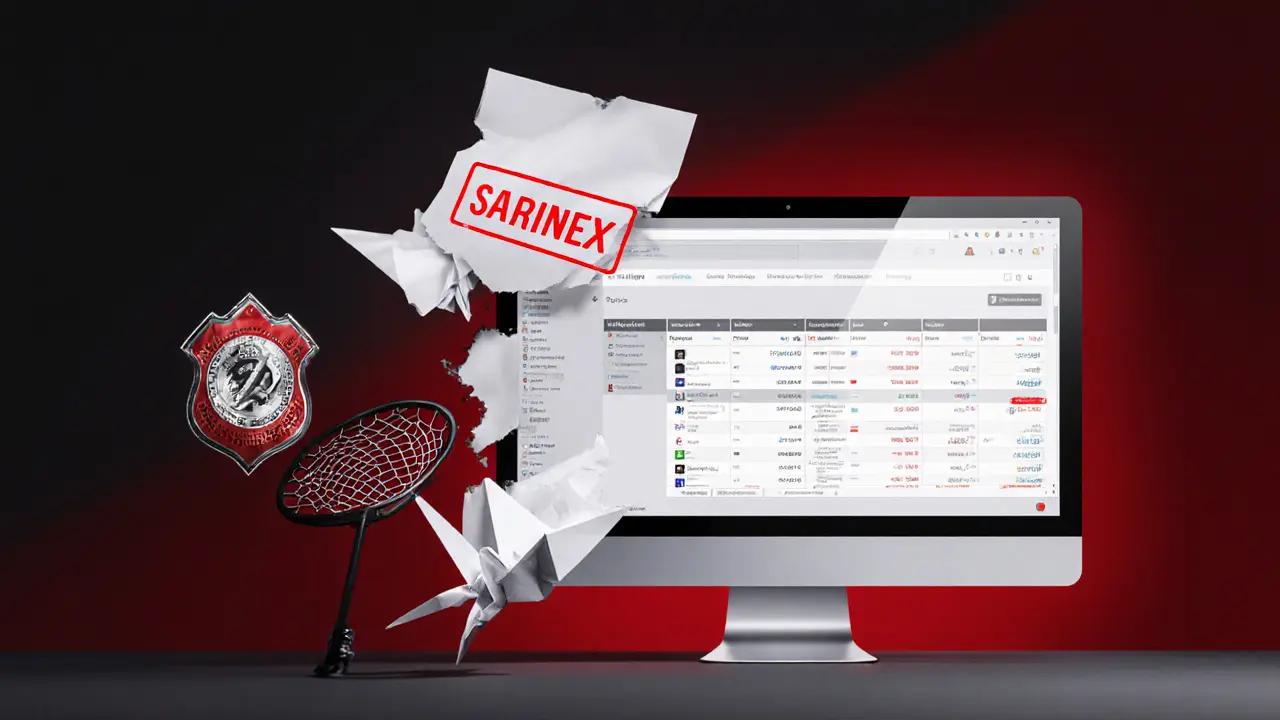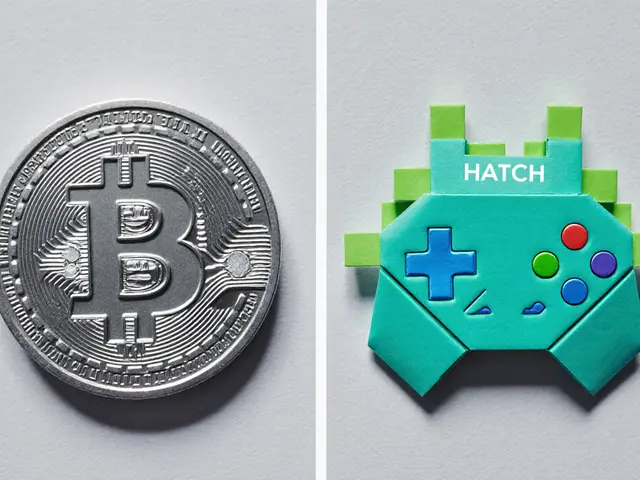Crypto Sanctions Evasion Techniques Explorer
VPN / Proxy Access
Mask IP addresses to appear as if browsing from crypto-friendly jurisdictions.
Simple, low barrier Can be blocked by IP-range blacklists OFAC IP monitoringDEX Trading
Trade on decentralized exchanges without central authority control.
Permission-less, hard to shut down Gas fees, limited fiat on-ramps Wallet tracking, AML reportingSuccessor Exchanges
Launch new platforms mimicking existing ones after being sanctioned.
Brand continuity, familiar UI Legal risk for operators Domain takedown, asset freezingStablecoin Swaps
Move funds between stablecoins to avoid freezes on one platform.
Preserves liquidity during freezes Requires cross-chain bridges Bridge blacklisting, AML alertsTelegram Micro-Exchanges
Peer-to-peer trading with minimal KYC requirements.
Fast, low KYC Scams, limited scalability Chat monitoring, infiltrationDeFi Protocols
Use decentralized finance protocols to maintain access to funds.
High resilience, permissionless Complexity for non-technical users Smart contract targeting, compliance embeddingHow It Works
This interactive explores how sanctioned users navigate restrictions imposed by global authorities like OFAC. Each card represents a common evasion technique, showing strengths, weaknesses, and enforcement responses.
Click on any technique above to see detailed insights about its usage, effectiveness, and countermeasures taken by regulators.
When governments freeze assets and blacklist digital wallets, you’d think crypto would become untouchable for people living under those sanctions. Yet, every year a new wave of workarounds surfaces, keeping the market fluid for users in places like North Korea, Russia, Iran, and beyond. This guide walks through who’s behind the enforcement, the tricks users employ, real‑world case studies, and what the future might hold.
Quick Take
- OFAC issued 57 crypto‑related sanctions in 2024, a 18% annual rise since 2018.
- Bitcoin accounts for 65% of transactions linked to sanctioned entities; stablecoins make up 12%.
- When a major exchange is seized, operators usually launch a successor platform within weeks.
- Users often swap USDT for DAI on Polygon to dodge freezes.
- DeFi protocols are now a primary enforcement target, but they also provide the most resilient access points.
The Enforcement Landscape
In the United States, the Office of Foreign Assets Control (OFAC) maintains the world’s most exhaustive list of crypto‑related designations. As of 2025, the agency has placed over 1,200 wallet addresses on its Specially Designated Nationals (SDN) list, and it has levied more than $430million in penalties for crypto sanctions violations in 2024 alone.
The bulk of these actions target North Korea (38% of all OFAC crypto designations in 2024), followed by Russia and Iran. Enforcement is no longer limited to traditional exchanges; in January 2025 OFAC froze $150million of assets held by a DeFi protocol, signalling a broader net.
Technical Access Vectors
Sanctioned citizens leverage several layers of technology to stay connected:
- VPNs and proxy services - mask IP addresses, allowing users to appear as if they are browsing from crypto‑friendly jurisdictions.
- Decentralized exchanges (DEXs) - platforms like Uniswap operate without a central authority, making it hard to block a specific user.
- Stablecoin migration - after Tether (USDT) froze Iranian‑linked addresses in July 2025, traders rapidly swapped to DAI (a dollar‑pegged stablecoin on the Polygon network) to retain liquidity.
- Cross‑border payment processors - services such as Exved (a Russian‑based platform that moves goods and crypto between jurisdictions) act as a bridge for moving funds in and out of sanctioned territories.
- Telegram‑based micro‑exchanges - informal markets like MKAN Coin (a Dubai‑registered crypto exchange that mirrors Garantex’s services) facilitate peer‑to‑peer trades with minimal KYC.
Collectively, these tools keep a steady stream of Bitcoin (65% of sanctioned activity), Ethereum (18%), and stablecoins (12%) flowing despite official blocks.
Case Study: The Garantex‑to‑Grinex Transition
When Garantex (a Russian crypto exchange sanctioned by OFAC in 2022) was hit by a coordinated seizure in March 2025, the operators didn’t disappear. Within days they launched Grinex (a successor platform that mimics Garantex’s UI and API), moving user accounts and funds to a new domain hosted in a jurisdiction with lax AML oversight.
The migration used encrypted email lists, invitation‑only sign‑ups, and a custom bridge that swapped Garantex‑based tokens for Grinex equivalents on the Polygon chain. By the end of 2025, Grinex was handling roughly $30million per month, illustrating how quickly sanctions‑hit services can re‑emerge under a new brand.

Case Study: ShapeShift’s Compliance Failure
The Swiss exchange ShapeShift (defunct after a $750,000 OFAC settlement in 2025) serves as a cautionary tale. An internal audit revealed no sanctions compliance program; the platform allowed users from Cuba, Iran, Sudan, and Syria to trade without any geo‑blocking. The settlement underscored a broader industry weakness: many exchanges treat compliance as an after‑thought, opening loopholes for sanctioned users.
How Users React to Freezes: The Tether‑DAI Pivot
When Tether (USDT) froze 42 Iranian‑linked addresses on July 2, 2025, the impact was immediate. Iranian traders posted on local crypto forums urging everyone to move to DAI on Polygon. Within 48hours, transaction data from TRM Labs showed a 28% surge in DAI‑Polygon swaps originating from Iranian IP clusters. This rapid pivot demonstrates two key points:
- Community coordination can outpace enforcement.
- Polygon’s low fees and fast finality make it a favorite fallback network.
Even with the government’s new taxation law on crypto profits (August2025), the DAI‑Polygon corridor remained active, evidencing the durability of network effects.
Comparison of Common Evasion Methods
| Method | Typical Tools | Strengths | Weaknesses | Enforcement Counter‑measures |
|---|---|---|---|---|
| VPN / Proxy Access | Commercial VPNs, residential proxies | Simple, low barrier to entry | Can be blocked by IP‑range blacklists | OFAC IP monitoring, domain seizure |
| DEX Trading | Uniswap, SushiSwap, PancakeSwap | Permission‑less, hard to shut down | Gas fees, limited fiat on‑ramps | Tracking wallet clusters, AML reporting |
| Successor Exchanges | Grinex, MKAN Coin, offshore domains | Brand continuity, familiar UI | Legal risk for operators | Domain takedown, asset freezing |
| Stablecoin Swaps | USDT → DAI on Polygon, USDC → BUSD | Preserves liquidity during freezes | Requires cross‑chain bridges | Bridge blacklisting, AML alerts |
| Telegram Micro‑Exchanges | MKAN Coin, local bot networks | Fast, low KYC | Scams, limited scalability | Chat monitoring, infiltration |
Future Outlook: An Arms Race
Enforcement agencies are scaling up: in 2024, 23% of all new sanctions designations were crypto‑related, and that share grew to 27% in early 2025. Simultaneously, users are migrating toward truly decentralized infrastructures-layer‑2 networks, privacy‑preserving mixers, and DAO‑run exchanges.
Analysts predict three likely developments:
- More DeFi targeting - expect OFAC and European counterparts to list entire smart‑contract addresses, forcing developers to embed compliance code.
- Increased use of privacy chains - ZK‑rollups and zk‑SNARK‑enabled assets could become the default for sanctioned users.
- Cross‑border payment hubs - platforms like Exved will evolve into full‑scale crypto banks, offering fiat gateways while masking origin.
For regulators, the key is balancing financial‑crime risk with the innovation benefits of open networks. For citizens in sanctioned nations, the lesson is clear: agility, community coordination, and a deep understanding of blockchain technology remain the best tools to stay online.
Practical Checklist for Exchanges
- Implement real‑time geo‑IP verification and VPN detection.
- Adopt on‑chain analytics to flag SDN‑listed wallet interactions.
- Require multi‑factor KYC for stablecoin withdrawals above $10,000.
- Maintain an audit trail of smart‑contract interactions for DeFi integrations.
- Run periodic compliance drills simulating a sanctions freeze.

Frequently Asked Questions
How do sanctioned users hide their IP addresses?
Most rely on commercial VPN services that provide servers in crypto‑friendly countries. Some use residential proxy networks that route traffic through typical home‑user IPs, making detection harder for basic IP‑blacklists.
Can a decentralized exchange be blocked?
Not directly. Because DEXs run on smart contracts without a central server, authorities can only target specific wallet addresses or try to restrict the on‑ramps that move fiat into the blockchain.
What happened after Tether froze Iranian USDT wallets?
Traders quickly swapped USDT for DAI on the Polygon network. The move preserved liquidity and demonstrated that community coordination can outpace a single stablecoin issuer’s enforcement action.
Are successor exchanges like Grinex legal?
Legality depends on jurisdiction. If the platform processes transactions for sanctioned individuals, it can be targeted under OFAC’s secondary sanctions, even if the brand name changes.
What are the biggest risks for users employing mixers?
Mixers can be seized, and users may lose funds if the service turns out to be a scam. Additionally, law‑enforcement is increasingly focusing on mixer operators, which can lead to indirect exposure for users.





C Brown
So the U.S. finally decides to crack down on crypto users in sanctioned countries – how original!
It's almost as if the whole world is a giant game of cat‑and‑mouse, and the cat is armed with a clipboard.
These VPN tricks? Cute, really – like a teenager trying to hide a Snapchat streak from their parents.
Decentralized exchanges are touted as unstoppable, yet every time a new smart contract pops up, regulators throw a digital net over it, hoping to catch a fish that never bites.
Successor exchanges sprout like weeds after a fire, only to be bulldozed again by the same old legal bulldozers.
The stability of stablecoin swaps? Just a fancy way of saying "move the money before they catch you."
And don't get me started on Telegram micro‑exchanges – they’re the Wild West, but without the charm of gunfights, just a lot of scams.
OFAC's IP monitoring is about as effective as a ceiling fan in a hurricane – it just spins and swirls, never actually stopping the wind.
Yet every time a new sanction list is published, a fresh batch of tech‑savvy users dive deeper into the shadows, laughing at the notion of “compliance.”
The real issue isn’t the tech; it’s the arrogance of governments thinking they can control a decentralized network with a few blacklists.
When authorities freeze assets, the affected users simply hop onto a different chain, like a digital version of moving houses across the border.
Even the most sophisticated bridge can be blacklisted, but that only fuels the creation of the next generation bridge – it's a never‑ending arms race.
And sure, regulators love to claim they’re protecting national security, but the collateral damage is ordinary citizens trying to survive.
In the end, the only thing truly resilient is the community spirit that finds workarounds faster than any bureaucracy can react.
So congratulations, regulators, you’ve just confirmed what the internet has known for years: you can’t stop a wave with a sieve.
Noel Lees
Interesting read! 😊 The way people adapt is actually quite impressive. It shows the resilience of the crypto community, and I think that’s something to admire. Keep up the good work!
Raphael Tomasetti
VPNs and proxy stacks are just the surface‑level mitigation; the real move is to layer on onion routing for obfuscation. Decentralized liquidity pools remain the backbone for evasive capital flow.
Jenny Simpson
Wow, you really think these “innovations” are groundbreaking? We've seen this dance since the dawn of peer‑to‑peer. Still, the drama of a new successor exchange makes for a good story.
Sabrina Qureshi
Wow!!! This guide is overflowing with details!!! I love how each technique gets a badge-strengths, weaknesses, COUNTERMEASURES!!! It’s practically a handbook for the brave!!!
Marie Salcedo
Great overview! The bullet points make it easy to digest, and the examples give real context. Keep sharing these helpful breakdowns!
Kristen Rws
I think this is super helpful, lol. it really shows how creative people can be.
Nilesh Parghi
One might ponder the philosophical implications of a borderless ledger versus nation‑state sovereignty. The tension is both inevitable and intriguing.
Keith Cotterill
Indeed, the sanitized veneer of compliance attempts to masquerade as robustness, yet beneath lies a fragility that scholars of finance ought to dissect. A commendable exposition.
Maggie Ruland
Wow, that’s a lot of workarounds.
Joyce Welu Johnson
This article really helped me understand why people turn to DeFi when traditional exchanges are blocked. The examples make it clear how resilient these systems can be. Thank you for the thorough explanation!
Ally Woods
Yeah, it's kinda cool how they keep finding new ways. Still, it feels a bit sketchy sometimes. Not gonna lie, I’m a bit skeptical.
Fionnbharr Davies
We should remind newcomers that while these methods exist, they also carry significant risk. Education and caution are essential in navigating this space. Thanks for the balanced view.
Narender Kumar
Whilst perusing the documentation, one cannot help but observe the intricate ballet of regulation and innovation. It is, undoubtedly, a testament to human ingenuity. May we proceed with both caution and curiosity.
Anurag Sinha
Do you ever wonder who's really pulling the strings? The layers of VPNs, proxies, and mixers are probably just the tip of an iceberg. Somewhere, secret agencies are watching every transaction, feeding data to unknown masters. It feels like a dystopian thriller.
Raj Dixit
People need to stop glorifying illegal activity; it’s just not right. Follow the rules or face the consequences.
Lisa Strauss
Thanks for shedding light on a complex issue! Your guide makes it easier for everyone to stay informed.